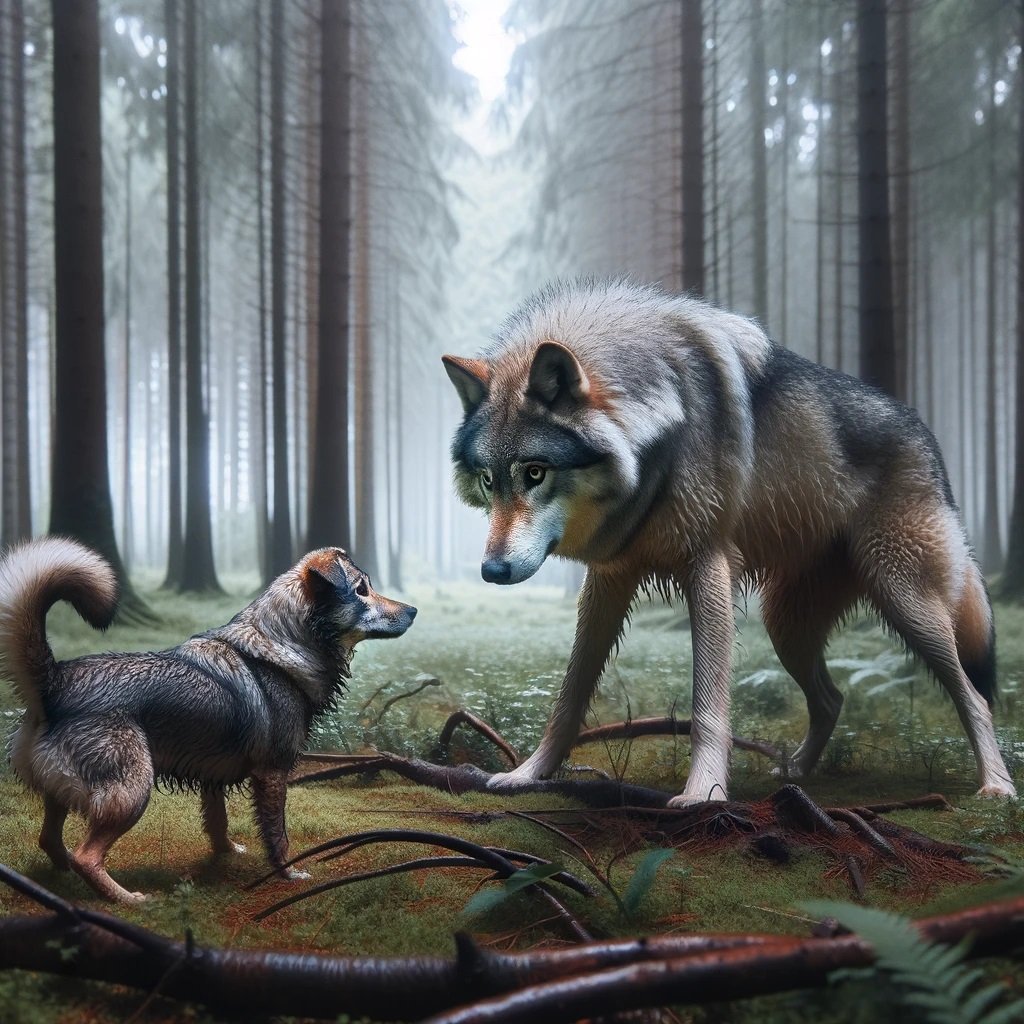Introduction: The Canine Showdown
Okay, the next hot topic is a real family feud—wolf vs. dog! Yeah, I know they’re like cousins or something, but that doesn’t mean they’d play nice in a one-on-one showdown. Let’s dig into this and figure out who’d come out on top, shall we?
Wild Instincts: Meet the Wolf
First, let’s talk wolves. A full-grown gray wolf can weigh up to 175 pounds and measure about 6 feet from nose to tail tip. These are pack animals, but they’re also ferocious solo predators. They’re built for endurance hunting and can hit speeds of about 37 mph for short bursts. In terms of tools, wolves have incredibly strong jaws that exert a force of up to 1,500 pounds per square inch. Basically, if a wolf gets a hold of something, it’s not letting go easily.
Domesticated But Deadly: The Dog
Now, dogs are pretty varied, right? They come in all shapes and sizes, but for this showdown, let’s focus on larger breeds like German Shepherds, Belgian Malinois, or Kangals. These dogs can weigh anywhere between 65 to 150 pounds. But even at their biggest, they’re generally smaller than wolves. Speed-wise, a German Shepherd can hit about 30 mph, while a Kangal might go up to 30-35 mph. Impressive, but still generally slower than a wolf.
Tactics and Techniques: Who’s Smarter?
Wolves have the upper hand when it comes to hunting and survival instincts. I mean, they have to survive in the wild, hunting for every meal. Dogs are generally bred for specific tasks like herding, guarding, or companionship, so they don’t usually have that same killer instinct. That said, some breeds are highly trained in protection or police work and can be extremely tactical in their approach.

Pack Mentality: The Numbers Game
Both wolves and dogs are social animals that can work in packs, but let’s be real, wolves do it way better. Wolves have intricate social hierarchies and coordinated hunting techniques that have evolved over millions of years. Even a pack of the most coordinated dogs probably wouldn’t match up to a wolf pack’s level of cooperation. If it’s a pack vs. pack scenario, I’d say wolves have the edge.
Environment: Where’s This Going Down?
As always, location matters. If this is happening in a dense forest or open plain, the wolf might feel more at home. However, in an urban environment or someplace with a lot of human-made obstacles, a trained dog like a German Shepherd could have the advantage.
Adaptation to Environmental Pressures
A study from Yellowstone National Park revealed interesting aspects of wolf behavior in response to environmental pressures. When bears are present, wolf kill rates drop, suggesting an alteration in their foraging strategy. This change in behavior is attributed to wolves spending more time defending their kills or avoiding confrontations with bears, rather than hunting new prey. This dynamic contrasts with that of larger cats, who tend to increase their kill rates under similar circumstances. The research underscores how wolves adapt their foraging behaviors based on seasonality and competition with other predators, like bears. In winter, when bears hibernate, wolves face less competition, whereas in summer, the presence of bears and the responsibility of denning and raising pups significantly affect their foraging behavior
Final Verdict: What Are the Odds?
Alright, let’s get to the nitty-gritty. In a one-on-one match, considering average individuals of each species, the wolf has the size, speed, and natural instinct advantage. I’m giving the wolf an 80% chance of victory. The dog, depending on the breed and training, gets a 20% chance. If we’re talking packs, wolves still get the advantage for their superior social structure and hunting techniques. In that case, it would be 70% for the wolves and 30% for the dogs.
Encounters of Dog and Wolf
Encounters between dogs and wolves in the wild can vary significantly, depending on the context and location. Here are a couple of illustrative examples from different areas:
Dog VS Wolf in US
- Michigan’s Upper Peninsula, USA: In this region, interactions between wolves and dogs are not uncommon, especially considering the presence of hunting dogs in wolf territories. A recent incident involved a gray wolf attacking a hunting dog near Marquette, Michigan. The dog was pursuing a hare about 200 yards off the trail when the wolf pounced and bit its hind leg. This encounter was likely triggered by the sound of the dog actively baying, which might have been interpreted by the wolf as a signal of a canine rival or prey within its territory. Notably, wolf attacks on dogs in this area have been infrequent but not unheard of. Over the past five years, there have been at least 33 incidents of dogs being killed or injured by wolves in the Upper Peninsula, with most of these attacks involving hunting dogs, particularly those used for hunting bear.
- Hovland Neighborhood, USA: In another example, residents of the Hovland neighborhood, where wolves are known to inhabit, have reported occasional attacks on local dogs. This situation requires vigilance, especially when letting dogs out, even on leashes. The interaction in this area seems to be more about territorial defense by the wolves, as they may perceive dogs as threats to their pack, especially when pups are young and vulnerable.
Dog Vs Wolf Europe and Asia
- Turkey and Georgia: In Turkey, there was a notable incident in 2013 where wolves attacked a dog in a family’s garden in Yemişen, Muş. This attack escalated to the wolves injuring all five family members who tried to rescue the dog. Similarly, in Georgia, two wolves attacked a dog in a yard in Laituri Village, Ozurgeti Municipality, Guria Province, and seriously injured the owner who attempted to rescue it.
- Sweden: In 2011 in Sweden, a particularly alarming incident occurred where two wolves attacked a woman with a child carriage and their dog in Rörmossen. The woman and the child escaped uninjured, but the dog was killed by the wolves.
- Croatia: In Croatia, the expanding gray wolf populations across Europe have led to increased interactions with people and domestic animals, including dogs. Between 2010 and 2018, a total of 103 hunting dogs were reported as attacked by wolves, with 86% of these attacks being fatal. The majority of these attacks occurred during drive hunts on wild boar, particularly in the Split–Dalmatia County.
- Tajikistan: In the remote eastern Badakhshan Province of Tajikistan, villagers have reported frequent wolf attacks on their livestock and pets. The wolves first preyed on all the dogs in the village and then moved on to attacking larger livestock such as sheep and cows. This highlights the predatory nature of wolves when they come into close contact with human-inhabited areas.
These examples demonstrate that the nature of dog-wolf encounters can be heavily influenced by the territorial and protective instincts of wolves, especially in areas where they coexist with domestic dogs. While attacks are not exceedingly common, they do occur, particularly in regions where wolves are established and dogs venture into their territory. The outcomes of these encounters can vary, but they often result in injury or death for the dogs involved, particularly in the case of hunting dogs that stray into wolf territory.
Explore the confrontation between two formidable North American predators in “Wolf vs. Cougar: A Battle of North American Predators“.




